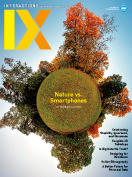Authors:
Jonathan Lazar, Mega Subramaniam, Paul Jaeger, John Bertot
Cultural institutions such as museums, archives, and libraries often adhere to specific public policy requirements relating to the presentation of digital interfaces and information. With a mission of universal service to their communities, libraries must navigate unique public policy challenges related to interaction design. Meeting this mission can be difficult, given the wide range of educational backgrounds, levels of literacy and digital literacy, languages, disabilities, and other factors represented among library patrons. Efforts to promote an environment of inclusive technology access and universal usability in this context provide many important lessons about the impacts of public policy. Insights…
You must be a member of SIGCHI, a subscriber to ACM's Digital Library, or an interactions subscriber to read the full text of this article.
GET ACCESS
Join ACM SIGCHIIn addition to all of the professional benefits of being a SIGCHI member, members get full access to interactions online content and receive the print version of the magazine bimonthly.
Subscribe to the ACM Digital Library
Get access to all interactions content online and the entire archive of ACM publications dating back to 1954. (Please check with your institution to see if it already has a subscription.)
Subscribe to interactions
Get full access to interactions online content and receive the print version of the magazine bimonthly.






